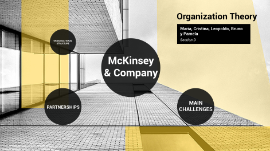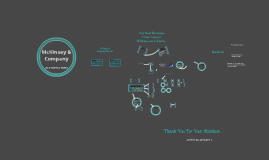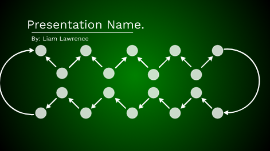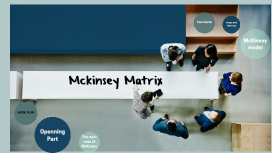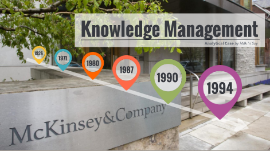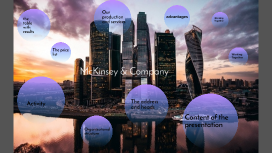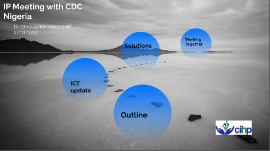McKinsey
Transcript: Section D Maria, Cristina, Leopoldo, Bruno y Pamela Organization Theory Globlal management consulting firm. - Long term improvements to clients performance - Research into management issues. McKinsey & Company THE COMPANY More than 14 thousand consultants located worldwide assist clients in improving their business THE COMPANY They help them by making long-term changes to the companies, but also in terms of social contribution. Mission Statement MISSION "Our mission is to help our clients make distinctive, lasting, and substantial improvements in their performance and to build a great firm that attracts, develops, excites, and retains exceptional people.” Main Customers CUSTOMERS Private, public and social sector institutions and private. INDUSTRIES: Automotive Chemicals Financial services Private Equity COMPETITORS MAIN COMPETITORS - Boston Consulting Group BCG - Bain & Company - Deloitte Consulting - Accenture - Ernst and Young - PwC PricewaterhouseCoopers - KPMG - Booz and Company GEOGRAPHICAL MARKETS Mckinsey provides services worldwide and has offices in more than 60 countries and more than 120 cities. In Spain for example, it has been present for more than 40 years GEOGRAPHICAL MARKETS STRENGTHS 1. Always Innovating - continually seek new and better ways to serve their clients - continually bring new talent into the firm - develope new capabilities for example in design, analytics and digital. 2. Investment - They invest more than $600 Million annually in knowledge development. 3. Knowing the market - The firm studies markets, trends, and emerging best practices, in every industry and region, locally and globally. 4. Partnerships -They partner with clients to put recommendations into practice and work directly with them over the long-term STRENGTHS ORGANIZATIONAL STRUCTURE ORGANIZATIONAL STRUCTURE - Originally organized as a partnership - Turned into a private corporation with shares owned by its partners in 1956 - Flat hierarchy and each member has a mentor - The firm is also managed by a series of committees with their own area of responsibility De-centralized structure different offices operate similarly, but independently Consultants and engagements are often shared across offices McKinsey consultants are either industry experts, functional experts, or generalists that cover specific geographic regions. The firm has 23 industry practices focused on individual industries, 9 functional practices that work in areas like finance, marketing or risk, and 5 Capabilities and Solutions areas related to technology consulting. More of McKinsey's Structure More of McKinsey's Structure ORGANIZATIONAL STRUCTURE DIAGRAM Professional Bureaucracy since they have to provide professional service to clients There is a higher amount of standardization of skills and output Work Coordination Work Coordination PARTNERSHIPS PARTNERSHIPS WORLD ECONOMIC FORUM UN WOMEN NEW CLIMATE ECONOMY FOCUSING CAPITAL ON THE LONG TERM LEAN IN. ORG (CDP) CARBON DISCLOSURE PROJECT MAIN RESOURCES Prestige Human resources Knowledge Human relations. Consultancies require a dose of understanding the company and also having a clear vision of the future in order to predict what market trends be like on the forthcoming years. Their Main Resources Include: MAIN CHALLENGES Fundamental characteristics McKinsey bases its resources on the data provided by customers. Need for a clear overview of the market as well. How is the company managed? - nonhierarchical and inclusive -sustain a caring meritocracy develop one another through apprenticeship and mentoring -uphold the obligation to dissent -governs itself as a “one firm” partnership Maintain the majority of the current customers. Increase the customer pool with new, powerful customers. Do not become technologically obsolete. Incorporate new, young workers (mainly executives). Main challenges Main challenges






